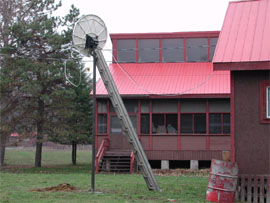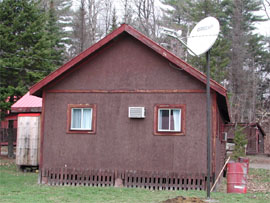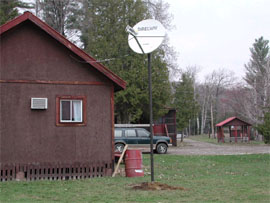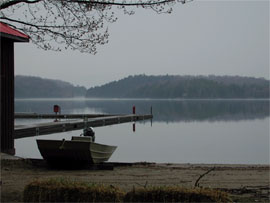 Utterson Central Ontario |
Getting up to speed. Gary Gaudet and his family have been living on acreages outside of Saskatoon, in rural Saskatchewan, since the mid-1990s. He switched to a high-speed wireless microwave-based Internet connection as soon as one became available in the area. "In this day and age I don’t know if you can operate without high-speed Internet," Gaudet says. "Our kids seem to live on MSN, and my wife and I use it for e-mail, online banking, and airline travel. I own the Green Brier Golf and Country Club in Saskatoon, so we also use the Internet to purchase supplies. Also, I can use it to access the club’s 16 security cameras right from my house, 24 hours a day." Once a company puts up a tower in your area, getting high-speed installed is relatively straight-forward. As long as your home has a clear line of sight to the tower, all that is necessary is to install an antenna on your roof. If you don't, though, it's more difficult. Location limitation. "Location is your primary limitation," Eon says. "Trees and rolling hills play a big factor with getting services. If you’re surrounded by large trees or heavy brush then we have to use a tower or install some type of mast on top of the house to get over those trees to get line-of-sight." "Even though we are surrounded by trees, getting high-speed was relatively straightforward," Gaudet says. "They installed an antenna on our roof, cut down one tree, and trimmed another. The system works 100%." Other subscribers haven’t been as fortunate. Eon says sometimes hooking up a high-speed connection requires a lot of creativity. "We’ve installed services on barns and then re-broadcast the signal over to the house," Eon says. "Sometimes, if the customer lives in a valley or a heavy grove of trees, we’ll put up a little tower where we can get a signal and trench a cable to the house." Unfortunately microwave-based systems aren’t available everywhere. If they’re not, a two-way satellite system will often be a good option. A good rule of thumb is if you can get satellite TV you can get satellite Internet. One of the advantages we’ve got is we provide services pretty well anywhere. One customer who comes to mind is a lady who had a beautiful home up in the mountains in British Columbia. She worked from home as a software developer for a large technology company. Once a week she had to take files and disks and storage devices down to town and spend a day transferring them to her employer. After we installed our system, she could do it all from home. The system might not be for everyone, Latency, something television viewers know as satellite delay, can be a problem with some applications. It takes about 500 milliseconds for the signal to make the round trip between your computer and the satellite. That might not seem like a lot of time, but if your 10-year-old son likes playing shoot-em-up games on the Internet, it’s long enough to cause him to lose every time. Cost competitive. The cost of having a satellite or a microwave-based system has come down dramatically in the past few years. Monthly costs are now very competitive with telephone or cable high-speed systems. There are initial equipment costs to absorb, Hodgkinson says, but in most cases a homeowner can purchase a system and have it professionally installed for under $600. Satellite systems need to be installed professionally and be precisely aimed, since the signal is bounced off a 20-foot antenna orbiting 23,000 miles above the equator. |








